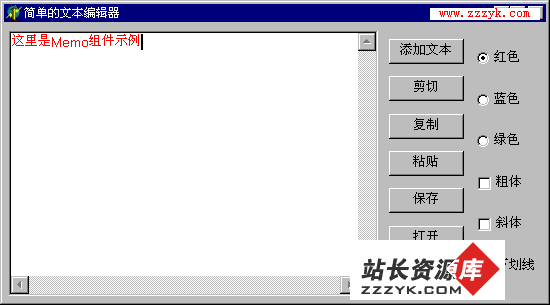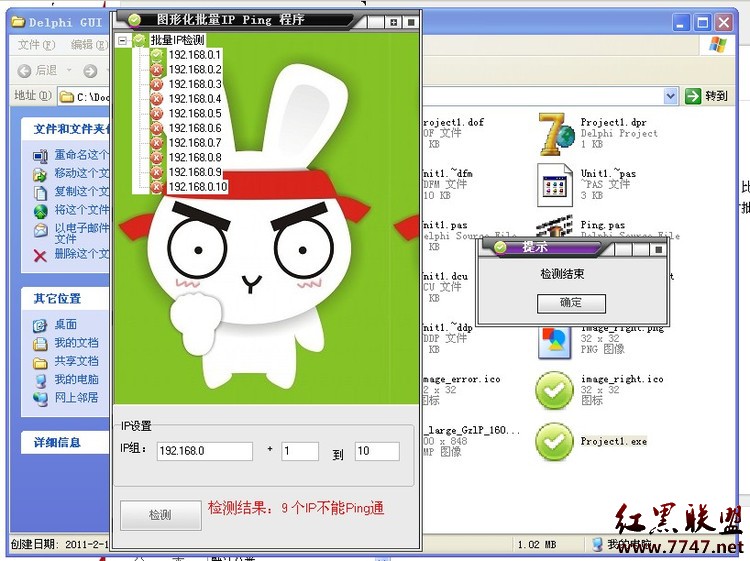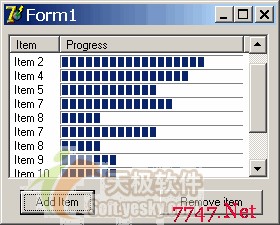浅谈APIHOOK技术(二)
在这里我将要实现转跳。有人说修改内存内容要进入Ring 0 才可以。可是Windows本身提供了一个写内存的指令WriteProcessMemory。有了这把利器,我们几乎无所不能。如游戏的修改等在这里我们只谈APIHOOK。
function RepointFunction(OldFunc, NewFunc: Pointer): Integer;
var
IsDone: TList;
function RepointAddrInModule(hModule: THandle; OldFunc, NewFunc: Pointer): Integer;
var
Dos: PImageDosHeader;
NT: PImageNTHeaders;
ImportDesc: PImage_Import_Entry;
RVA: DWORD;
Func: ^Pointer;
DLL: string;
f: Pointer;
written: DWORD;
begin
Result := 0;
Dos := Pointer(hModule);
if IsDone.IndexOf(Dos) >= 0 then exit;
IsDone.Add(Dos);OldFunc := LocateFunctionAddress(OldFunc);
if IsBadReadPtr(Dos, SizeOf(TImageDosHeader)) then exit;
if Dos.e_magic <> IMAGE_DOS_SIGNATURE then exit;
NT := Pointer(Integer(Dos) + dos._lfanew);RVA := NT^.OptionalHeader.DataDirectory[IMAGE_DIRECTORY_ENTRY_IMPORT]
.VirtualAddress;if RVA = 0 then exit;
ImportDesc := pointer(integer(Dos) + RVA);
while (ImportDesc^.Name <> 0) do
begin
DLL := PChar(Integer(Dos) + ImportDesc^.Name);
RepointAddrInModule(GetModuleHandle(PChar(DLL)), OldFunc, NewFunc);
Func := Pointer(Integer(DOS) + ImportDesc.LookupTable);
while Func^ <> nil do
begin
f := LocateFunctionAddress(Func^);
if f = OldFunc then
begin
WriteProcessMemory(GetCurrentProcess, Func, @NewFunc, 4, written);
if Written > 0 then Inc(Result);
end;
Inc(Func);
end;
Inc(ImportDesc);
end;
end;begin
IsDone := TList.Create;
try
Result := RepointAddrInModule(GetModuleHandle(nil), OldFunc, NewFunc);
finally
IsDone.Free;
end;
end;
有了这两个函数我们几乎可以更改任何API函数。
我们可以先写一个DLL文件。我这里以修改Text相关函数为例:
先定义几个函数:
type
TTextOutA = function(DC: HDC; X, Y: Integer; Str: PAnsiChar; Count: Integer): BOOL; stdcall;
TTextOutW = function(DC: HDC; X, Y: Integer; Str: PWideChar; Count: Integer): BOOL; stdcall;
TTextOut = function(DC: HDC; X, Y: Integer; Str: PChar; Count: Integer): BOOL; stdcall;
TDrawTextA = function(hDC: HDC; lpString: PAnsiChar; nCount: Integer; var lpRect: TRect; uFormat: UINT): Integer; stdcall;
TDrawTextW = function(hDC: HDC; lpString: PWideChar; nCount: Integer; var lpRect: TRect; uFormat: UINT): Integer; stdcall;
TDrawText = function(hDC: HDC; lpString: PChar; nCount: Integer; var lpRect: TRect; uFormat: UINT): Integer; stdcall;
var
OldTextOutA: TTextOutA;
OldTextOutW: TTextOutW;
OldTextOut: TTextOut;
OldDrawTextA: TDrawTextA;
OldDrawTextW: TDrawTextW;
OldDrawText: TDrawText;
......
function MyTextOutA(DC: HDC; X, Y: Integer; Str: PAnsiChar; Count: Integer): BOOL; stdcall;
begin
OldTextOutA(DC, X, Y, ABC, length(ABC));
end;function MyTextOutW(DC: HDC; X, Y: Integer; Str: PWideChar; Count: Integer): BOOL; stdcall;
begin
OldTextOutW(DC, X, Y, ABC, length(ABC));
end;function MyTextOut(DC: HDC; X, Y: Integer; Str: PChar; Count: Integer): BOOL; stdcall;
begin
OldTextOut(DC, X, Y, ABC, length(ABC));
end;function MyDrawTextA(hDC: HDC; lpString: PAnsiChar; nCount: Integer; var lpRect: TRect; uFormat: UINT): Integer; stdcall;
begin
OldDrawTextA(hDC, ABC, length(ABC), lpRect, uFormat);
end;function MyDrawTextW(hDC: HDC; lpString: PWideChar; nCount: Integer; var lpRect: TRect; uFormat: UINT): Integer; stdcall;
begin
OldDrawTextW(hDC, ABC, length(ABC), lpRect, uFormat);
end;function MyDrawText(hDC: HDC; lpString: PChar; nCount: Integer; var lpRect: TRect; uFormat: UINT): Integer; stdcall;
begin
OldDrawText(hDC, ABC, length(ABC), lpRect, uFormat);
end;调用时我们要把原来的函数地址保存下来:
if @OldTextOutA = nil then
@OldTextOutA := LocateFunctionAddress(@TextOutA);
if @OldTextOutW = nil then
@OldTextOutW := LocateFunctionAddress(@TextOutW);
if @OldTextOut = nil then
@OldTextOut := LocateFunctionAddress(@TextOut);
if @OldDrawTextA = nil then
@OldDrawTextA := LocateFunctionAddress(@DrawTextA);
if @OldDrawTextW = nil then
@OldDrawTextW := LocateFunctionAddress(@DrawTextW);
if @OldDrawText = nil then
@OldDrawText := LocateFunctionAddress(@DrawText);
然后很顺其自然的用自己的函数替换掉原来的函数
RepointFunction(@OldTextOutA, @MyTextOutA);
RepointFunction(@OldTextOutW, @MyTextOutW);
RepointFunction(@OldTextOut, @MyTextOut);
RepointFunction(@OldDrawTextA, @MyDrawTextA);
RepointFunction(@OldDrawTextW, @MyDrawTextW);
RepointFunction(@OldDrawText, @MyDrawText);
在结束时不要忘记恢复原来函数的入口,要不然你会死得很难看哟!好了我们在写一个Demo程序。你会说怎么文字没有变成ABC呀?是呀,你要刷新一下才行。最小化然后在最大化。看看变了没有。
要不然你就写代码刷新一下好了。至于去拦截其他进程的API那就用SetWindowsHookEx写一个其他的钩子将DLL映射进去就行了,我就不再浪费口水了。
掌握了该方法你几乎无所不能。你可以修改其它程序。你可以拦截Createwindow等窗口函数改变其他程序的窗口形状、你还可以入侵其它的程序,你还可以......嘿嘿。干了坏事别招出我来就行了。
我还写了个例子,请在CSDN上下载。
补充:软件开发 , Delphi ,




